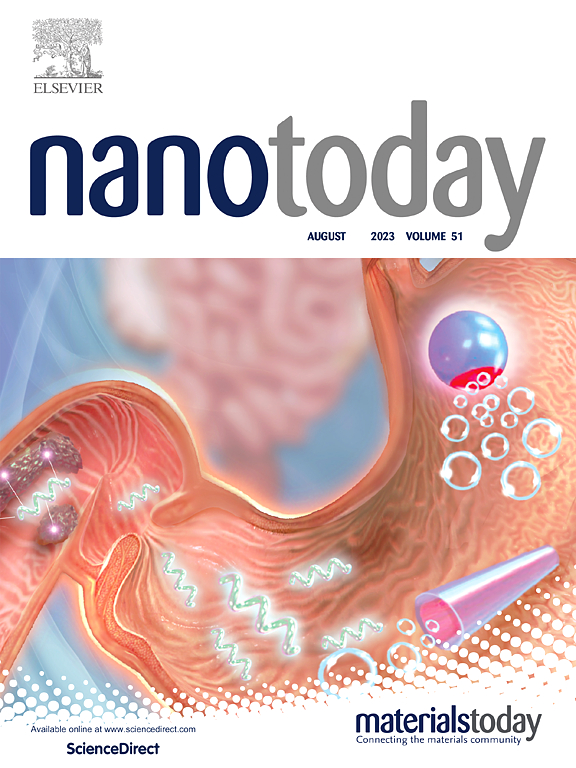“Convex Lens” of DNA damage: A nanomedicine enhances anti-PD-1 immunotherapy as immunogenic cell death inducer for “cold” melanoma
IF 13.2
1区 材料科学
Q1 CHEMISTRY, MULTIDISCIPLINARY
引用次数: 0
Abstract
Immune checkpoint blockade therapy combined with DNA-damaging therapy can enhance antitumor effects; however, for low-immunogenic melanoma, the efficacy is limited due to impaired antigen presentation and T cell dysfunction. Therefore, we have developed a self-assembled nanodrug (C-GaP) containing an ATR inhibitor, ceralasertib, which can block the DNA damage response, along with the metal ion gallium(Ⅲ), which is capable of inducing DNA replication stress, further exerting a cascading amplification effect on DNA damage. The C-GaP nanodrug exhibits a uniform size distribution and demonstrates outstanding performance in inducing DNA damage, inhibiting proliferation, and promoting apoptosis and immunogenic cell death (ICD) in melanoma cells. Further experiments demonstrate that the C-GaP nanodrug inhibits the phosphorylation of Chk1, enhances the expression of γ-H2AX and cleaved caspase3, and inhibits the PI3K-AKT pathway in vitro. Intriguingly, the C-GaP nanodrug induces dendritic cell activation by triggering ICD in melanoma cells and further induces the activation of helper T cells and cytotoxic T cells, which result in significant antitumor effects in vivo. Moreover, the administration of C-GaP elevates the PD-L1 expression in tumors, while the combination therapy of C-GaP nanodrug and an anti-PD-1 antibody achieves better tumor-suppressive efficacy. Therefore, this designed C-GaP nanomedicine exhibits an antitumor effect as an inducer of ICD.
求助全文
约1分钟内获得全文
求助全文
来源期刊

Nano Today
工程技术-材料科学:综合
CiteScore
21.50
自引率
3.40%
发文量
305
审稿时长
40 days
期刊介绍:
Nano Today is a journal dedicated to publishing influential and innovative work in the field of nanoscience and technology. It covers a wide range of subject areas including biomaterials, materials chemistry, materials science, chemistry, bioengineering, biochemistry, genetics and molecular biology, engineering, and nanotechnology. The journal considers articles that inform readers about the latest research, breakthroughs, and topical issues in these fields. It provides comprehensive coverage through a mixture of peer-reviewed articles, research news, and information on key developments. Nano Today is abstracted and indexed in Science Citation Index, Ei Compendex, Embase, Scopus, and INSPEC.
 求助内容:
求助内容: 应助结果提醒方式:
应助结果提醒方式:


